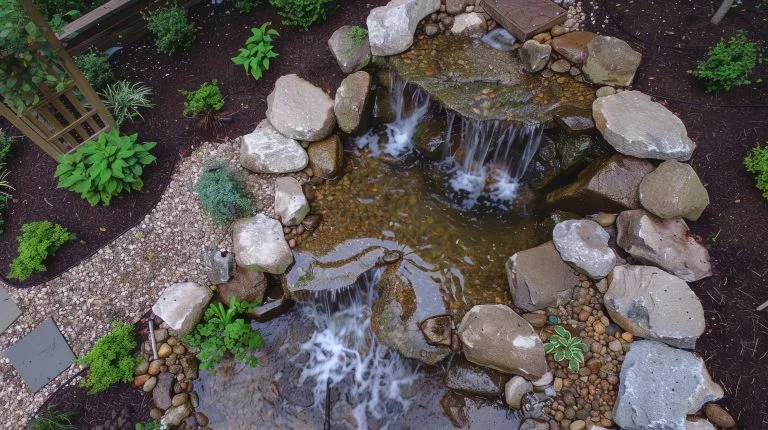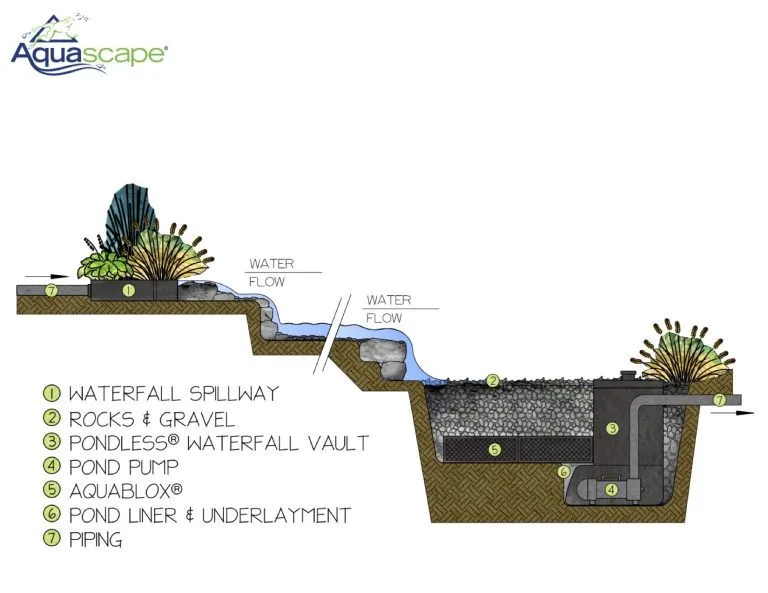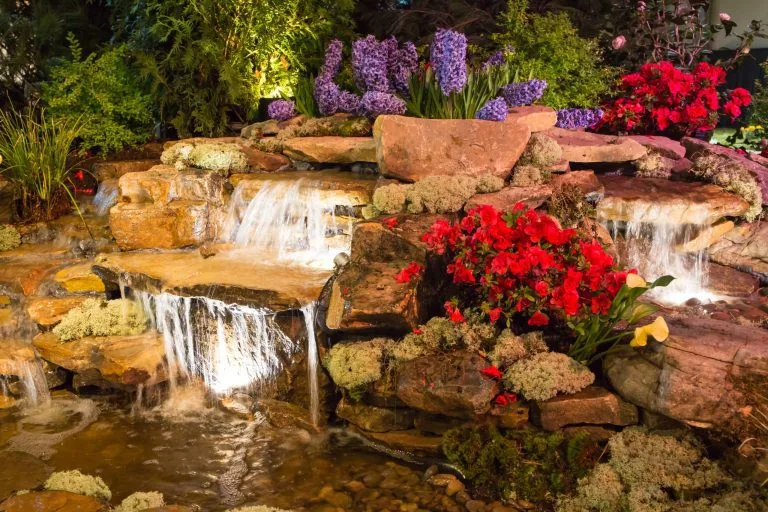Pondless Waterfalls
Low electrical costs! Almost zero maintenance! What’s not to like? Sometimes, owning a pond isn’t suitable for everyone, whether due to having a young family or a pet that loves to swim.

The perfect feature for limited spaces
Pondless Waterfalls
A stunning addition to any garden, providing soothing sounds.
Waterfalls starting from £3999.00
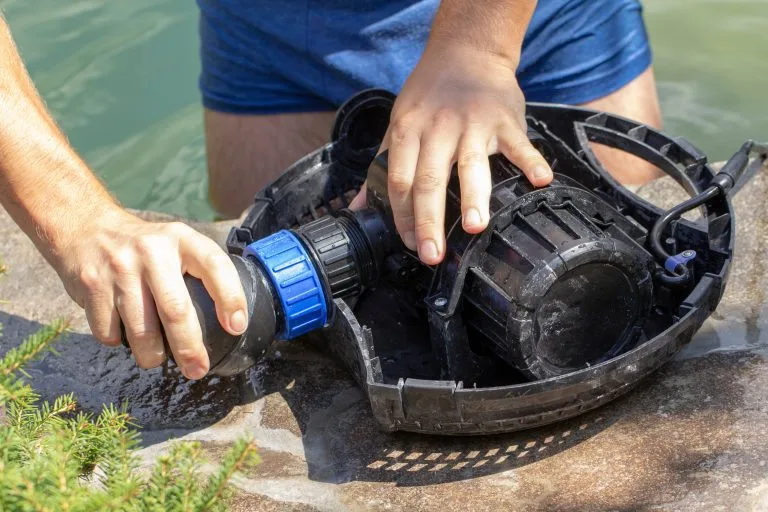

Create Your Own Stunning Pondless Waterfall: A Step-by-Step Guide
Planning and Designing Your Pondless Waterfall
- Determine the size and location of your pondless waterfall, considering factors such as sun exposure, drainage, and accessibility.
- Choose a landscape design that suits your garden style, such as a modern or traditional look.
- Consider the type of water feature you want, such as a solar powered water feature or a self contained water feature.
- Think about the soothing sounds you want to create, such as a gentle stream or a dramatic waterfall.

Building Your Pondless Waterfall
Choosing the Right Equipment and Materials
- Select a suitable pump and filtration system for your pondless waterfall.
- Choose the right type of rocks and gravel for your waterfall structure.
- Consider using a pre-formed pond or a DIY kit to make installation easier.
- Select plants that are suitable for your garden’s climate and soil type.
- Select a suitable water reservoir for the pondless waterfall to ensure proper water storage and circulation.
Creating the Waterfall Structure
- Build the waterfall structure using rocks, gravel, and other materials.
- Install the pump and filtration system, making sure to follow the manufacturer’s instructions.
- Add a basket or other feature to create a focal point for your waterfall.
- Consider adding a sunken area or a raised platform to create visual interest.
- Use a liner to prevent water leakage in the waterfall structure.



Finalising and Maintaining Your Waterfall
Adding Finishing Touches
- Add plants and other features to create a natural look and enhance the aesthetic appeal.
- Install a fountain or other water feature to enhance the sound and visual appeal. Consider solar-powered fountains, classic tiered fountains, or decorative fountains to suit your garden or home decor.
- Consider adding a stock tank or other feature to create a unique look.
- Add a layer of gravel or rocks to the bottom of the waterfall to create a natural look.
Maintenance and Upkeep
- Regularly clean and maintain the pump and filtration system to ensure proper function..
- Check the water level and top it off as needed to maintain the desired flow rate.
- Trim and prune plants to keep them healthy and looking their best.
- Consider adding a maintenance kit or other accessories to make upkeep easier.


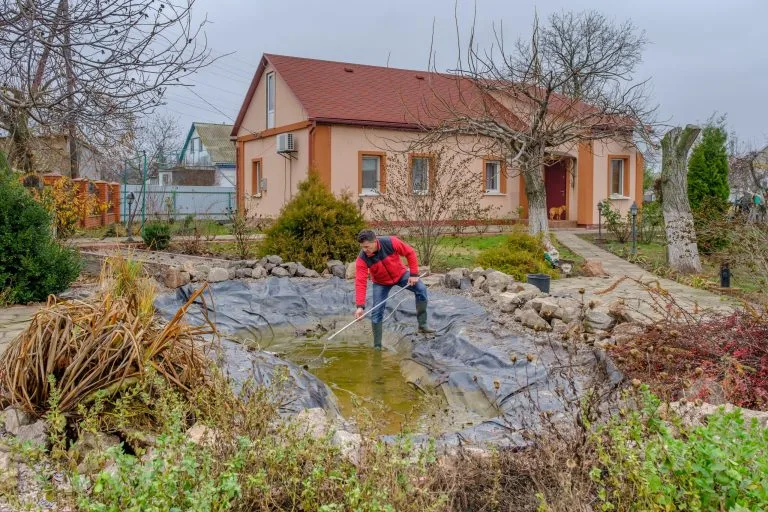

Frequently Asked Questions
MY POND IS OVERGROWN.
MY POND IS LEAKING – WHAT CAN I DO?
WHY IS MY POND WATER GREEN?
Do I need to have my pumps running all the time?
Why Choose Us
Experience With years of experience in pond maintenance and cleaning, our team has the expertise to handle ponds of all sizes and complexities. We are dedicated to delivering high-quality services tailored to meet the unique needs of each customer.
Professionalism Our team consists of trained professionals who are passionate about pond care. We take pride in our work and strive to exceed our customers’ expectations with every service we provide.
Customised Solutions We understand that every pond is different, and we tailor our services to suit the specific requirements of each customer. Whether you have a small backyard pond or a larger water feature, we have the knowledge and resources to keep it in pristine condition.
Environmentally Friendly Practices We are committed to using eco-friendly products and methods in our pond cleaning services. Our goal is to promote sustainability and preserve the natural balance of your pond ecosystem.
Customer Satisfaction Your satisfaction is our top priority. We work closely with our customers to ensure that their pond maintenance needs are met with professionalism and care. We take the time to listen to your concerns and provide personalised recommendations to help you achieve the pond of your dreams.
Ready to schedule a pond cleaning service with us?
Contact Aqua Pond today to learn more about our services and to book an appointment.
Let us help you create a clean, healthy, and vibrant pond that you can enjoy for years. Thank you for considering Aqua Pond for your pond maintenance needs.
What our Customers Say...

